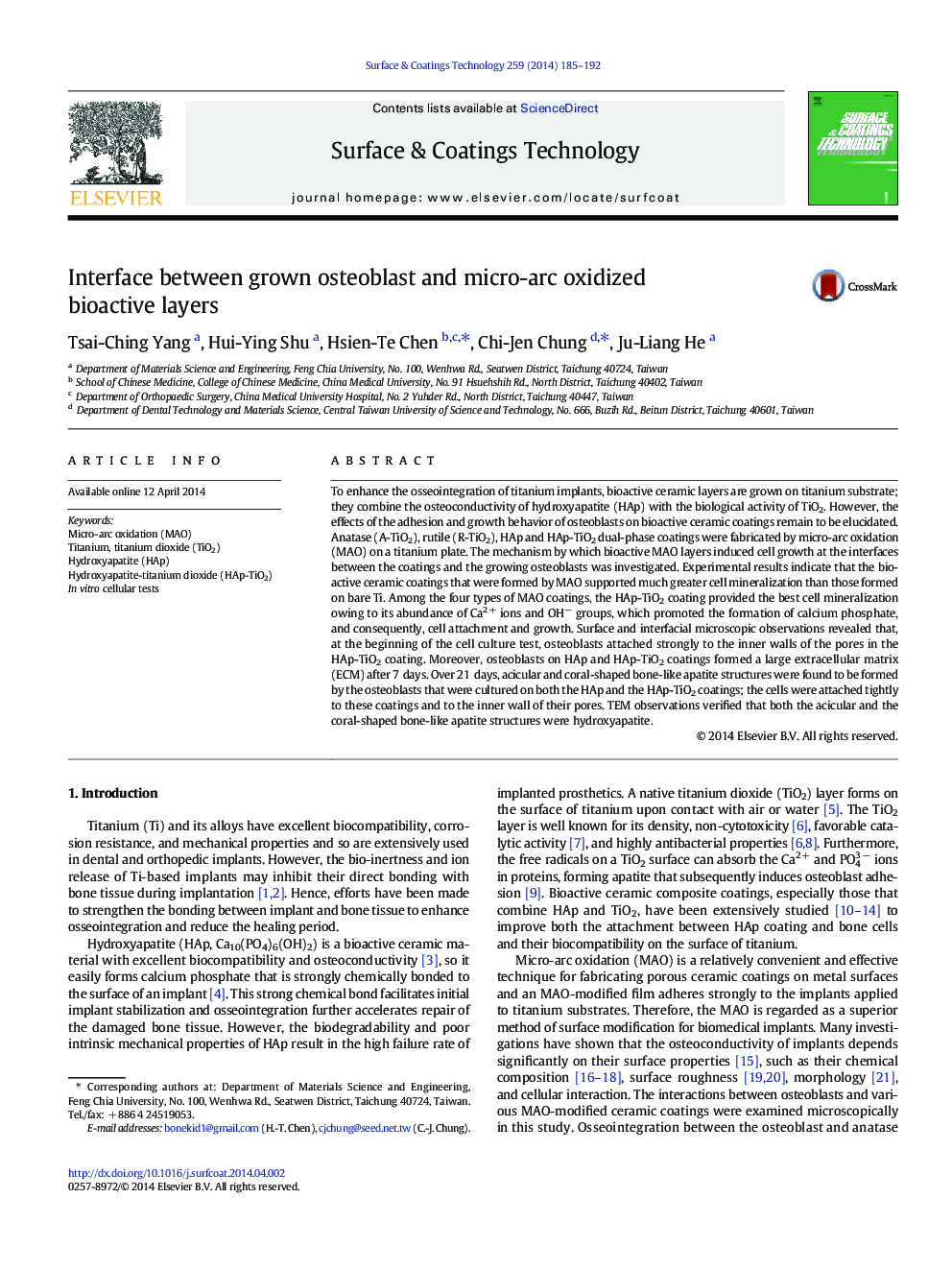| Article ID | Journal | Published Year | Pages | File Type |
|---|---|---|---|---|
| 1657352 | Surface and Coatings Technology | 2014 | 8 Pages |
•Bioactive MAO coatings show higher cell mineralization than those obtained on bare Ti.•Great amount of Ca2 + and OH− functional group was found on MAO HAp-TiO2 coating.•HAp-TiO2 coating forms calcium phosphate to obtain the optimal cell mineralization.•Bioactive calcium phosphate on HAp-TiO2 further speeds cell adhesion and growth.•Osteoblasts were then well attached and grew along the inner wall of HAp-TiO2 pores.
To enhance the osseointegration of titanium implants, bioactive ceramic layers are grown on titanium substrate; they combine the osteoconductivity of hydroxyapatite (HAp) with the biological activity of TiO2. However, the effects of the adhesion and growth behavior of osteoblasts on bioactive ceramic coatings remain to be elucidated. Anatase (A-TiO2), rutile (R-TiO2), HAp and HAp-TiO2 dual-phase coatings were fabricated by micro-arc oxidation (MAO) on a titanium plate. The mechanism by which bioactive MAO layers induced cell growth at the interfaces between the coatings and the growing osteoblasts was investigated. Experimental results indicate that the bioactive ceramic coatings that were formed by MAO supported much greater cell mineralization than those formed on bare Ti. Among the four types of MAO coatings, the HAp-TiO2 coating provided the best cell mineralization owing to its abundance of Ca2 + ions and OH− groups, which promoted the formation of calcium phosphate, and consequently, cell attachment and growth. Surface and interfacial microscopic observations revealed that, at the beginning of the cell culture test, osteoblasts attached strongly to the inner walls of the pores in the HAp-TiO2 coating. Moreover, osteoblasts on HAp and HAp-TiO2 coatings formed a large extracellular matrix (ECM) after 7 days. Over 21 days, acicular and coral-shaped bone-like apatite structures were found to be formed by the osteoblasts that were cultured on both the HAp and the HAp-TiO2 coatings; the cells were attached tightly to these coatings and to the inner wall of their pores. TEM observations verified that both the acicular and the coral-shaped bone-like apatite structures were hydroxyapatite.
